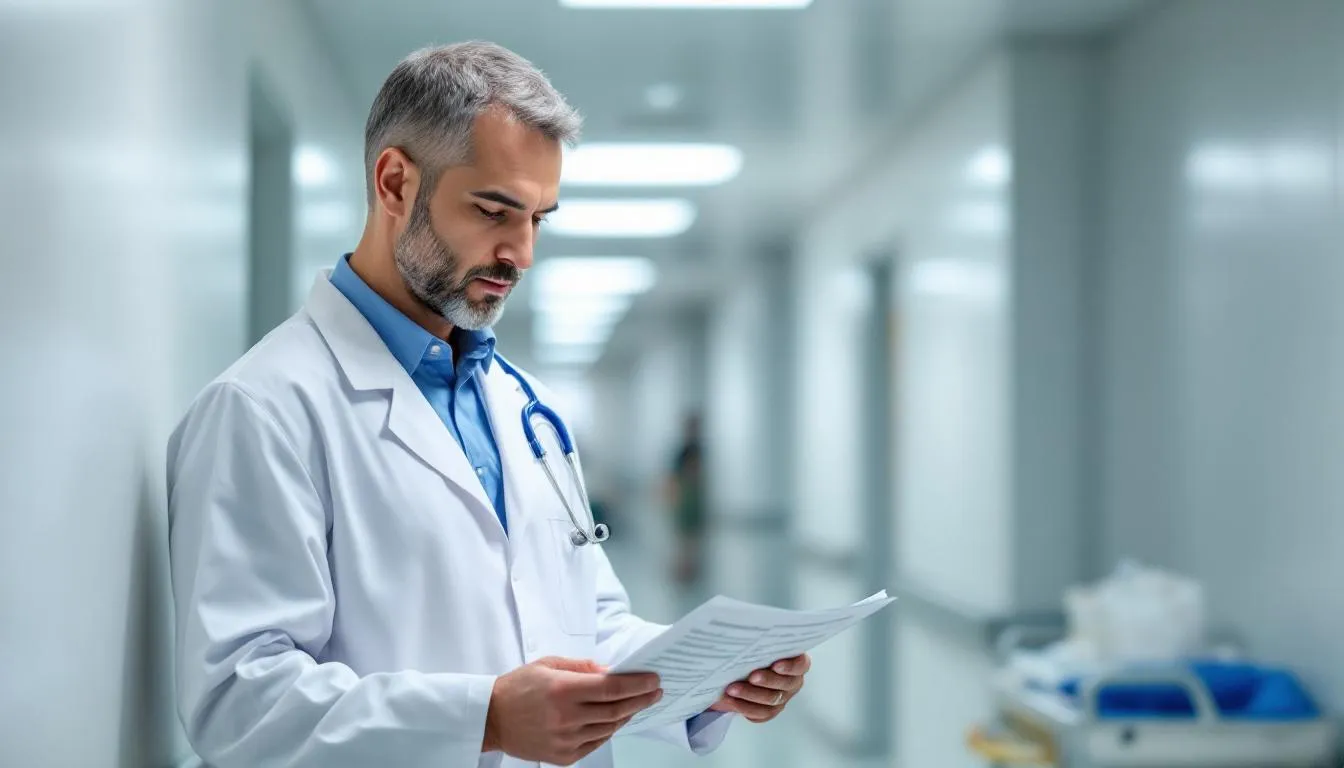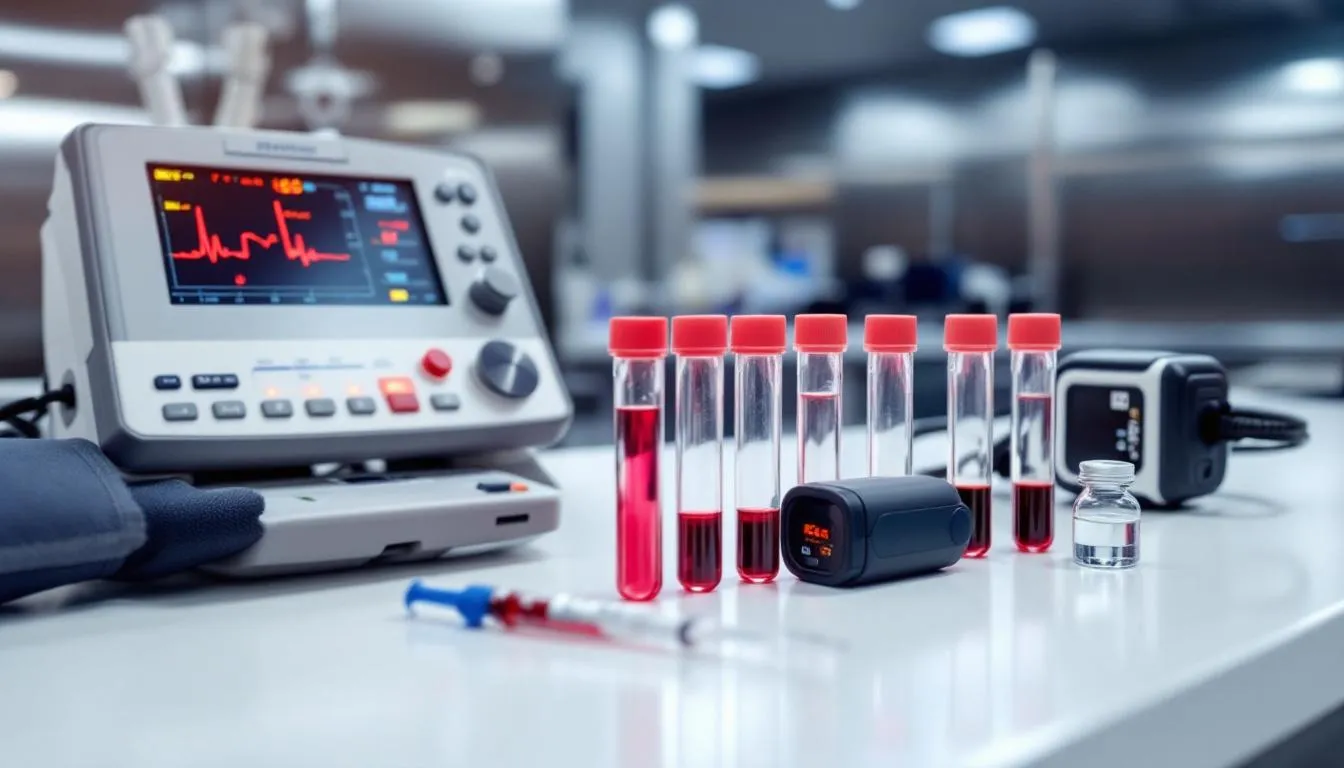While testosterone is often thought of as exclusively a male hormone, this powerful steroid plays crucial roles in women’s health throughout their lives. From supporting sexual desire and bone density to maintaining muscle mass and energy levels, testosterone in women affects far more than most people realize. Understanding when and how testosterone therapy might help can be life-changing for women experiencing certain symptoms, particularly those related to sexual dysfunction.
This comprehensive guide examines the science behind testosterone for women, exploring everything from normal hormone levels to treatment options. Whether you’re experiencing low sexual desire, fatigue, or other symptoms that might be related to low testosterone, this article provides evidence-based information to help you make informed decisions about your health.
Key Takeaways
- Testosterone is a vital hormone for women that affects sexual desire, mood, bone health, and muscle mass
- Women’s testosterone levels naturally decline with age, dropping to about one quarter by menopause
- Testosterone therapy may benefit postmenopausal women with hypoactive sexual desire dysfunction (HSDD)
- Treatment is typically given through gels, creams, or patches rather than oral forms
- Side effects can include acne, hair growth, and hair loss if doses are too high
- Women should be adequately estrogenized before starting testosterone therapy
- Regular monitoring through blood tests is essential during treatment
What is Testosterone in Women?

Testosterone is an androgen hormone classified as a steroid that plays essential roles in female physiology. While present in much lower concentrations than in men, testosterone production in women occurs primarily through the ovaries and adrenal glands. The ovaries contribute approximately one quarter to half of female testosterone through direct secretion and by converting other hormones like dehydroepiandrosterone (DHEA) and androstenedione.
What many people don’t realize is that before menopause, women actually produce more testosterone than estrogen when measured by total daily output. Specifically, women produce approximately 300 micrograms of testosterone daily compared to just 30 micrograms of estradiol. This highlights how testosterone plays a significant role in women’s overall health and well-being.
The hormone supports several critical functions:
- Sexual function and libido – maintaining sexual desire and arousal
- Bone health – preserving bone mineral density and preventing osteoporosis
- Muscle mass and strength – supporting lean muscle tissue
- Mood regulation – contributing to overall well-being and motivation
- Energy levels – helping maintain vitality and stamina
- Cognitive function – potentially supporting memory and concentration
Understanding these diverse roles helps explain why declining testosterone levels can affect multiple aspects of a woman’s life, from intimate relationships to daily energy and physical strength.
Normal Testosterone Levels and Age-Related Changes
Testosterone levels in women follow a predictable pattern throughout life. Most testosterone peaks during a woman’s early 20s, then begins a gradual but steady decline that continues through adulthood. By menopause, testosterone levels typically drop to about one quarter of their youthful peak values.
This natural age-related decline differs significantly from the dramatic changes some women experience. For instance, women who have their ovaries removed through surgical procedures experience a sharp, immediate drop in testosterone levels that’s much more severe than typical aging. This sudden change can trigger acute symptoms of low testosterone that significantly impact quality of life.
Currently, there’s no universally agreed-upon laboratory cutoff to diagnose low testosterone levels in women based solely on blood tests. This is because there’s considerable overlap between hormone levels in women with and without symptoms. Additionally, individual sensitivity to testosterone varies, and many laboratory assays aren’t reliable for measuring the low concentrations typically found in women.
Symptoms of Low Testosterone in Women
Low testosterone can manifest through various symptoms that often overlap with other conditions, making diagnosis challenging. The symptoms aren’t specific to testosterone deficiency alone, as many medical, psychological, and relationship factors can contribute to similar issues.
Sexual Symptoms
The most prominent and well-documented symptoms related to low testosterone involve sexual function:
- Low sexual desire – reduced interest in sex or hypoactive sexual desire disorder
- Decreased arousal – difficulty becoming sexually excited
- Orgasm difficulties – trouble reaching climax or reduced satisfaction
- Vaginal dryness – particularly when combined with estrogen deficiency
Physical Symptoms
Low testosterone levels can also affect physical health and appearance:
- Fatigue and decreased energy – persistent tiredness not relieved by rest
- Reduced muscle mass and strength – loss of lean muscle tissue
- Bone loss – decreased bone density potentially leading to fracture risk
- Changes in body composition – increased fat accumulation
Emotional and Cognitive Symptoms
Many women with low testosterone report psychological changes:
- Mood changes – including irritability, anxiety, or depression
- Reduced motivation – loss of drive for activities once enjoyed
- Cognitive changes – difficulties with memory, concentration, or mental clarity
- Decreased overall well-being – general sense that something isn’t right
It’s crucial to understand that these symptoms can result from numerous other causes, including thyroid disorders, depression, relationship issues, medications, or other hormonal imbalances. A thorough evaluation by a healthcare provider is essential to identify the underlying cause and determine appropriate treatment.
Who Should Consider Testosterone Therapy?

Testosterone therapy isn’t appropriate for all women experiencing the symptoms described above. According to the global consensus position statement from leading medical organizations including the International Menopause Society and Endocrine Society, specific criteria help identify appropriate candidates for treatment.
Primary Indication
The only evidence-based, internationally recognized indication for testosterone therapy in women is postmenopausal women with acquired, distressing hypoactive sexual desire disorder (HSDD). This means the decreased sex drive developed over time and causes significant personal distress, after other potential causes have been thoroughly investigated and excluded.
Appropriate Candidates
Several groups of women may be suitable for testosterone therapy:
- Postmenopausal women with distressing sexual dysfunction despite adequate estrogen therapy
- Women with surgical menopause (those who had their ovaries removed) experiencing sexual dysfunction
- Women already receiving hormone replacement therapy with stable estrogenization but persistent low sex drive
Important Prerequisites
Before considering testosterone therapy, several conditions must be met:
- Adequate estrogenization – estrogen deficiency must be addressed first to optimize genital tissue health
- Comprehensive evaluation – other causes of sexual dysfunction must be excluded
- Stable relationship status – relationship factors contributing to low desire should be addressed
- Mental health assessment – depression, anxiety, and other mood disorders should be treated
Contraindications
Testosterone therapy is not recommended for women with:
- Known or suspected hormone-sensitive cancers (breast or endometrial cancer)
- Active cardiovascular disease or uncontrolled heart disease risk factors
- Severe liver disease or elevated liver enzymes
- Pregnancy or plans to conceive due to potential effects on fetal development
- Severe metabolic syndrome with uncontrolled diabetes or obesity
Premenopausal Women
Current evidence doesn’t support testosterone therapy for premenopausal women outside of very specific research settings. The long term safety data for younger women is insufficient, and the risks may outweigh potential benefits in this population.
Types of Testosterone Treatment for Women
Currently, no FDA or European Medicines Agency-approved testosterone formulations exist specifically designed for women in the United States or European Union. This means most prescriptions involve using male testosterone products at much lower doses, typically one-tenth the standard male dose.
Available Formulations
Transdermal Gels Products like Testogel® and Tostran® are commonly prescribed off-label for women. These gels are applied to clean, dry skin on the thighs, abdomen, or upper arms, with application sites rotated to minimize skin irritation. The gel absorbs through the skin to provide steady hormone levels.
Creams and Ointments Compounded testosterone creams can be customized to specific doses for women. AndroFeme®, approved specifically for women in Australia, represents the gold standard for female testosterone formulations. These creams typically provide more precise dosing than adapting male products.
Testosterone patches deliver sustained hormone levels through the skin but are less commonly prescribed for women due to the lack of female-specific dosing options. When used, they’re typically cut or applied less frequently than manufacturer recommendations suggest.
Administration Guidelines
Proper application is crucial for both effectiveness and safety:
- Apply to clean, dry skin away from breast tissue
- Rotate application sites to prevent skin irritation
- Avoid swimming or bathing for several hours after application
- Wash hands thoroughly after application to prevent transfer to others
- Monitor for skin reactions at application sites
What to Avoid
Oral testosterone is not recommended for women due to several concerns:
- Unpredictable absorption and metabolism
- Negative effects on cholesterol levels
- Potential liver function impacts
- Difficulty achieving stable blood levels
The goal of any testosterone treatment is to maintain serum testosterone within the premenopausal female range, typically monitored through the Free Androgen Index rather than total testosterone levels alone.
Benefits of Testosterone Therapy

Extensive randomised controlled trial data supports the use of physiological-dose testosterone therapy for specific indications in postmenopausal women. Multiple systematic review and meta analysis studies have documented the benefits, particularly for sexual function.
Sexual Function Improvements
The most robust evidence demonstrates significant improvements in several aspects of sexual health:
- Enhanced sexual desire – increased interest in sexual activity
- Improved arousal – better ability to become sexually excited
- Increased frequency of satisfying sexual episodes – more frequent and enjoyable intimate encounters
- Better orgasmic response – enhanced ability to reach climax
- Improved overall sexual satisfaction – greater contentment with sexual experiences
Meta-analysis data suggests that for every 10 women treated with testosterone therapy, 1 to 2 more will experience meaningful improvement in sexual function compared to those receiving placebo treatment.
Additional Benefits
While sexual function improvements are the primary evidence-based benefit, many women report additional positive effects:
- Enhanced mood and well-being – improved overall emotional state
- Increased energy levels – better stamina and vitality
- Improved self-image – enhanced confidence and body perception
- Better muscle mass and strength – preservation of lean muscle tissue
- Maintained bone density – potential protection against osteoporosis
Realistic Expectations
It’s important to understand that testosterone therapy typically provides moderate rather than dramatic improvements. The hormone works best when combined with other appropriate treatments for sexual dysfunction, including relationship counseling, stress management, and addressing any underlying health conditions.
Most women begin noticing improvements within 4-6 weeks of starting treatment, but maximal benefits often take up to 6 months to develop. If no meaningful improvement occurs after 6 months of adequate therapy, discontinuation is typically recommended.
Safety and Side Effects
Short-term testosterone therapy at physiological doses is generally considered safe when proper monitoring and patient selection guidelines are followed. However, both common and serious side effects require careful consideration.
Common Side Effects
Most side effects are mild and dose-dependent:
- Acne – usually facial, similar to teenage acne
- Local hair growth – increased hair at application sites
- Mild skin irritation – redness or itching where gel or cream is applied
- Oily skin – increased sebum production
These effects are typically manageable and often improve as the body adjusts to treatment or with dose modifications.
Serious Androgenic Effects
When testosterone levels rise too high, more concerning side effects can develop:
- Voice deepening – potentially permanent vocal changes
- Significant hirsutism – excessive male-pattern hair growth
- Male-pattern hair loss – thinning or balding in typical male patterns
- Clitoral enlargement – permanent genital changes
- Increased aggression – mood and behavioral changes
These serious effects are uncommon when the Free Androgen Index is maintained below 5% and treatment is properly monitored.
Cardiovascular and Metabolic Safety
Current research shows encouraging safety profiles:
- No increased blood pressure in most studies
- No negative liver enzyme changes at physiological doses
- No increased cardiovascular events in studied populations, though most trials excluded high-risk women
- No significant lipid profile changes when avoiding oral formulations
Cancer Risks
Short-term studies (1-2 years) show:
- No increased breast cancer risk in postmenopausal women
- No endometrial proliferation when combined with appropriate estrogen therapy
- Long term safety data remains limited – this represents a critical knowledge gap requiring further research
Critical Safety Thresholds
Maintaining the Free Androgen Index below 5% during therapy is essential for minimizing risks. Treatment is typically considered for women with FAI below 1% who have clear symptoms, providing a substantial safety margin.
Monitoring and Testing

Proper monitoring is essential for both safety and effectiveness of testosterone therapy. This involves regular blood tests, clinical assessments, and ongoing communication with healthcare providers.
Testing Schedule
Before Starting Treatment:
- Total testosterone and SHBG levels
- Complete metabolic panel including liver function
- Lipid profile
- Complete blood count
- Thyroid function tests
- Assessment for contraindications
During Treatment:
- 3-6 weeks after initiation – check testosterone levels and adjust dose
- Every 6 months – comprehensive monitoring including:
- Testosterone and SHBG levels
- Liver function tests
- Lipid profile
- Blood pressure and weight
- Clinical symptom assessment
Ongoing Monitoring:
- Regular evaluation of treatment benefits and side effects
- Annual review of continued need for therapy
- Screening for developing contraindications
Clinical Assessment Priorities
Healthcare providers focus on symptom improvement rather than achieving specific hormone levels. The goal is meaningful improvement in sexual function and quality of life while maintaining safety parameters.
If no clinically meaningful benefit occurs after 6 months of adequate therapy, discontinuation is typically recommended. Some women may require dose adjustments or changes in formulation to optimize results.
Alternative Treatments to Consider First
Testosterone therapy should not be the first-line treatment for sexual dysfunction or other symptoms. Several other effective treatments should be explored before considering hormone therapy.
Hormone Optimization
Estrogen Therapy: Many symptoms attributed to low testosterone actually result from estrogen deficiency. Addressing estrogen levels first is crucial because:
- Estrogen supports vaginal tissue health
- Adequate estrogenization improves testosterone therapy effectiveness
- Many menopausal symptoms respond better to estrogen than testosterone
Psychological and Relationship Interventions
Sex Therapy and Counseling: Professional counseling addresses psychological and relationship factors affecting sexual desire:
- Individual therapy for personal sexual concerns
- Couples counseling for relationship dynamics
- Cognitive-behavioral therapy for sexual dysfunction
- Mindfulness-based interventions for sexual awareness
Mental Health Treatment: Depression, anxiety, and stress significantly impact sexual function:
- Treatment of underlying mood disorders
- Stress reduction techniques
- Review of medications that may affect libido (especially SSRIs)
- Consider alternative antidepressants like bupropion that may enhance sexual desire
Lifestyle Modifications
Exercise and Physical Health: Regular physical activity improves multiple factors affecting sexual function:
- Enhances mood and energy levels
- Improves body image and confidence
- Supports cardiovascular health necessary for sexual function
- Helps maintain healthy weight and muscle mass
Stress Management: Chronic stress significantly impacts hormone levels and sexual desire:
- Meditation and relaxation techniques
- Adequate sleep hygiene
- Time management and work-life balance
- Social support and hobby engagement
Medical Evaluation
Address Underlying Conditions: Many medical conditions affect sexual function:
- Thyroid disorders
- Diabetes and metabolic syndrome
- Cardiovascular disease
- Chronic pain conditions
- Sleep disorders
Medication Review: Numerous medications can impact sexual desire and function:
- Antidepressants (particularly SSRIs)
- Blood pressure medications
- Antihistamines
- Anti-anxiety medications
- Birth control hormones
Important Considerations Before Starting Treatment
Before beginning testosterone therapy, several crucial factors require careful evaluation and discussion with a healthcare provider.
Comprehensive Health Assessment
A thorough medical evaluation should exclude other causes of sexual dysfunction and identify any contraindications to hormone therapy. This includes:
- Complete medical history and physical examination
- Laboratory tests to rule out thyroid, diabetes, and other hormone disorders
- Cardiovascular risk assessment
- Cancer screening appropriate for age
- Mental health evaluation
- Relationship and psychosocial assessment
Realistic Expectations
Understanding what testosterone therapy can and cannot achieve is essential:
What Testosterone May Help:
- Improve sexual desire in appropriately selected postmenopausal women
- Enhance overall sexual satisfaction when combined with other treatments
- Provide modest improvements in energy and well-being
What Testosterone Cannot Do:
- Solve relationship problems or communication issues
- Reverse all effects of aging
- Replace the need for addressing underlying health conditions
- Guarantee improvement in all women who try it
Risk-Benefit Discussion
Each woman’s individual risk factors must be weighed against potential benefits:
Higher Risk Considerations:
- Personal or family history of hormone-sensitive cancers
- Cardiovascular disease or risk factors
- Liver disease or dysfunction
- History of blood clots
Individual Factors:
- Age and overall health status
- Severity of symptoms and impact on quality of life
- Response to other treatments
- Ability to commit to regular monitoring
Commitment to Monitoring
Successful testosterone therapy requires ongoing medical supervision:
- Regular blood tests to monitor hormone levels and safety parameters
- Periodic clinical evaluations to assess benefits and side effects
- Willingness to adjust doses or discontinue if problems arise
- Understanding that long-term effects are not fully known
Partner and Relationship Considerations
Since testosterone therapy primarily addresses sexual function, partner involvement and relationship dynamics are important:
- Open communication about treatment goals and expectations
- Partner understanding of the treatment process
- Addressing relationship factors that may affect sexual intimacy
- Realistic timeline for seeing improvements
FAQ
Is testosterone therapy FDA-approved for women?
Currently, there are no FDA-licensed female testosterone products in the United States or European Union. Most prescriptions use male formulations at reduced doses, which is considered “off-label” use. AndroFeme® has been approved specifically for women with HSDD in Australia, representing the only regulatory approval for female testosterone therapy.
How long does it take to see results from testosterone therapy?
Most women begin noticing improvements within 4-6 weeks of starting treatment, but maximal benefits often take up to 6 months to develop. Healthcare providers typically evaluate effectiveness after 6 months of adequate therapy. If no meaningful improvement occurs by this time, discontinuation is usually recommended.
Can premenopausal women use testosterone therapy?
Current evidence does not support testosterone therapy for premenopausal women outside of very specific research settings. The risks and benefits haven’t been adequately studied in younger women, and most medical guidelines recommend against its use in this population.
What happens if I stop testosterone therapy?
When testosterone therapy is discontinued, symptoms typically return gradually over weeks to months. The hormone should be tapered rather than stopped abruptly, especially in women who have used it long-term. Any benefits gained from treatment generally disappear once the therapy is stopped.
Can testosterone therapy cause weight gain?
There’s no evidence that physiological-dose testosterone therapy causes clinically significant weight gain in women. Some women may experience changes in body composition, such as increased muscle mass, but this is generally considered beneficial. High doses or misuse of testosterone could potentially affect weight and body composition.
Is testosterone therapy safe for women with PCOS?
Testosterone therapy is generally contraindicated in women with polycystic ovary syndrome (PCOS) due to the underlying androgen excess characteristic of this condition. Adding testosterone could potentially worsen PCOS symptoms and increase cardiovascular or metabolic risks.
Can I get pregnant while on testosterone therapy?
Testosterone therapy is not compatible with pregnancy due to potential masculinization effects on a developing fetus. Women of reproductive age should use effective contraception while receiving testosterone therapy. The hormone may also affect fertility, though this effect is typically reversible.
Testosterone for women represents a complex but potentially beneficial treatment option when used appropriately. The key to success lies in careful patient selection, realistic expectations, and ongoing medical supervision. While research continues to expand our understanding of testosterone’s role in women’s health, current evidence supports its use for specific indications in postmenopausal women with sexual dysfunction.
The decision to pursue testosterone therapy should always involve thorough discussion with a healthcare provider who can evaluate individual circumstances, explain risks and benefits, and provide appropriate monitoring. For women experiencing distressing sexual dysfunction that hasn’t responded to other treatments, testosterone therapy may offer meaningful improvement in quality of life and intimate relationships.
As our understanding of sex hormones and women’s health continues to evolve, the future may bring better treatment options, improved safety data, and more targeted therapies. Until then, the current evidence provides a solid foundation for informed decision-making about testosterone therapy for appropriately selected women.
